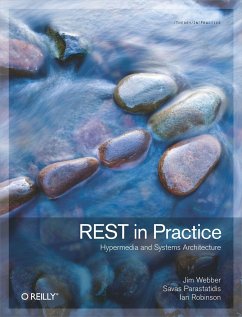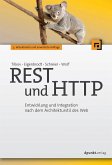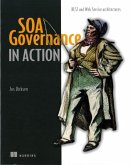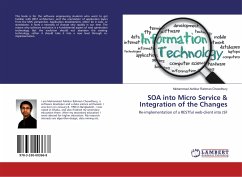REST continues to gain momentum as the best method for building web services, leaving many web architects to consider whether and how to include this approach in their SOA and SOAP-dominated world. In this insightful book, three SOA experts provide a down-to-earth explanation of REST and demonstrate how you can develop simple and elegant distributed hypermedia systems by applying the Web's guiding principles to common enterprise computing problems. You'll learn techniques for implementing specific Web technologies and patterns to solve the needs of a typical company as it grows from modest beginnings to become a global enterprise.
Why don't typical enterprise projects go as smoothly as projects you develop for the Web? Does the REST architectural style really present a viable alternative for building distributed systems and enterprise-class applications? In this insightful book, three SOA experts provide a down-to-earth explanation of REST and demonstrate how you can develop simple and elegant distributed hypermedia systems by applying the Web's guiding principles to common enterprise computing problems. You'll learn techniques for implementing specific Web technologies and patterns to solve the needs of a typical company as it grows from modest beginnings to become a global enterprise. Learn basic Web techniques for application integration Use HTTP and the Web's infrastructure to build scalable, fault-tolerant enterprise applications Discover the Create, Read, Update, Delete (CRUD) pattern for manipulating resources Build RESTful services that use hypermedia to model state transitions and describe business protocols Learn how to make Web-based solutions secure and interoperable Extend integration patterns for event-driven computing with the Atom Syndication Format and implement multi-party interactions in AtomPub Understand how the Semantic Web will impact systems design
Why don't typical enterprise projects go as smoothly as projects you develop for the Web? Does the REST architectural style really present a viable alternative for building distributed systems and enterprise-class applications? In this insightful book, three SOA experts provide a down-to-earth explanation of REST and demonstrate how you can develop simple and elegant distributed hypermedia systems by applying the Web's guiding principles to common enterprise computing problems. You'll learn techniques for implementing specific Web technologies and patterns to solve the needs of a typical company as it grows from modest beginnings to become a global enterprise. Learn basic Web techniques for application integration Use HTTP and the Web's infrastructure to build scalable, fault-tolerant enterprise applications Discover the Create, Read, Update, Delete (CRUD) pattern for manipulating resources Build RESTful services that use hypermedia to model state transitions and describe business protocols Learn how to make Web-based solutions secure and interoperable Extend integration patterns for event-driven computing with the Atom Syndication Format and implement multi-party interactions in AtomPub Understand how the Semantic Web will impact systems design








